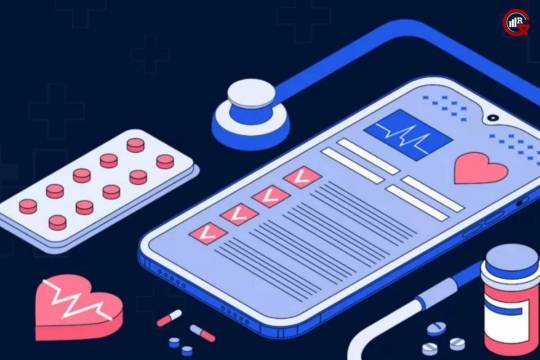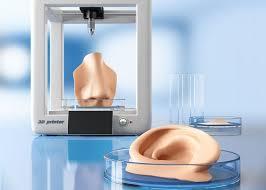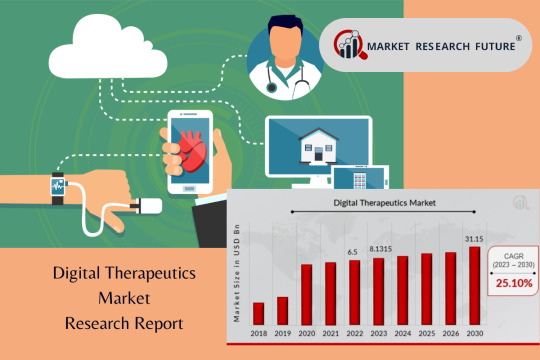#personalizedmedicine
Text
Analysis of: "From Brain to AI and Back" (academic lecture by Ambuj Singh)
youtube
The term "document" in the following text refers to the video's subtitles.
Here is a summary of the key discussions:
The document describes advances in using brain signal recordings (fMRI) and machine learning to reconstruct images viewed by subjects.
Challenges include sparseness of data due to difficulties and costs of collecting extensive neural recordings from many subjects.
Researchers are working to develop robust models that can generalize reconstruction capabilities to new subjects with less extensive training data.
Applications in medical diagnosis and lie detection are possibilities, but risks of misuse and overpromising on capabilities must be carefully considered.
The genre of the document is an academic lecture presenting cutting-edge neuroscience and AI research progress to an informed audience.
Technical content is clearly explained at an advanced level with representative examples and discussion of challenges.
Ethical implications around informed consent, privacy, and dual-use concerns are acknowledged without overstating current capabilities.
While more information is needed, the presentation style and framing of topics skews towards empirical science over opinion or fiction.
A wide range of stakeholders stand to be impacted, so responsible development and governance of emerging neural technologies should involve multidisciplinary input.
Advancing both basic scientific understanding and more human-like machine learning is a long-term motivation driving continued innovation in this important field.
Here is a summary of the key points from the document:
The speaker discusses advances in using brain signal recordings (fMRI) to reconstruct images that a person is viewing by training AI/machine learning models.
An example is shown where the top row is the actual image viewed and the bottom row is the image reconstructed from the person's brain signals.
Larger datasets with brain recordings from multiple subjects are allowing better models to be developed that may generalize to new subjects.
Challenges include the sparseness of brain signal data due to the difficulty and costs of collecting it from many subjects.
A model is presented that maps brain signals to a joint embedding space of images and text, allowing reconstruction of novel images from new brain signals.
Examples are shown where the reconstructed images match fairly well or not as well depending on image details and semantics.
Issues around ethics, risks of misuse, and questions of explaining and improving the models are discussed.
Ongoing work aims to address challenges around transferring models between subjects and measuring reconstruction performance.
Based on the content and style of the document, it appears to be an academic lecture or presentation.
Key evidence points include:
The document consists primarily of a speaker talking and presenting slides/examples to an audience, as indicated by phrases like "Let me just start with this" and an applause at the end.
Technical topics from neuroscience and machine learning/AI are discussed in detail, such as fMRI brain recordings, reconstructing images from brain signals, modeling approaches, dataset descriptions, and challenges/questions in the field.
Academic concepts like human subjects studies, building models, transferring learning, and measuring performance are referred to.
The presentation of information is intended to educate the audience on the state of the field and cuttting edge research, not just entertain.
There are no narratives, characters or creative storytelling elements - it adheres strictly to explaining complex technical content.
Therefore, based on the instructive/educational style and focus on explaining advanced technical research, I would classify the genre of this document as an academic lecture/presentation intended to inform an audience about progress in the domain of neuroscience and artificial intelligence.
Here are some of the key stakeholders that could be affected by the content and topics discussed in this document:
Neuroscience researchers - Directly interested and impacted by advances reported from their field of study. Progress informs future research directions.
AI/machine learning researchers - Models and challenges discussed could inspire new research at the intersection of AI and neuroscience. Transfer of model techniques.
Medical/clinical communities - Potential applications to diagnosis, personalized medicine if models can accurately reconstruct brain states. Raises ethical issues.
Government research agencies - Fund future related research based on understanding of opportunities and challenges conveyed. Evaluates societal impacts.
General public - Increased understanding of science helps engagement but topics like brain reading raise public concerns around privacy, consent if translated beyond research.
Research participants - Summary does not disclose identities but motivates others to contribute data for progress. Well-being depends on responsible use of data.
Technology companies - Commercial opportunities from real-world applications but also reputational risks if misused. Data ownership questions.
Academic institutions - Collaborations, education of next generations of researchers on cutting-edge topics is enabled through open dissemination of knowledge.
Overall the document provides value to a wide range of stakeholders by communicating the state and potential implications of this multidisciplinary area of neuroscience and AI research. Responsible stewardship is important given several ethical considerations.
Here is a summary of the key points about advances in using brain signal recordings from the document:
Researchers are using fMRI to record brain signals as people view images, in order to reconstruct the viewed images from the brain activity patterns alone.
Machine learning models, especially neural networks, are allowing researchers to train mappings from brain signals to representations of semantic content like images and text.
Examples show the capability of reconstructing fairly accurate images that a person viewed, based solely on their brain activity recordings during viewing.
Larger datasets with multiple subjects are important to develop models that may generalize beyond individual subjects. However, fMRI data is very difficult and expensive to collect at scale.
Advances now allow reconstruction of more complex stimuli like full stories a person reads, not just static images.
Ongoing work aims to better understand brain learning processes and apply those principles to more human-like machine learning architectures.
Analyzing brain recordings also has potential applications for medical diagnosis, lie detection, personalized medicine as models improve.
Ethics must be carefully considered to ensure technologies for reading neural signals are developed and applied responsibly and avoid misuse or privacy violations.
So in summary, the document outlines significant progress using machine learning on brain recordings to reconstruct sensory experiences, with applications and open questions that can further both neuroscience and AI.
Here is a summary of the key points about the sparseness of brain signal data:
Collecting fMRI brain signal recordings from large numbers of subjects is extremely challenging and costly due to the resources and time required.
Each recording session with a single subject takes considerable time, as the number of images/stimuli that can be presented is limited within a session.
Collecting data from a single subject sufficient for training complex models may require recording sessions over multiple days or weeks.
As a result, publicly available datasets typically contain recordings from only a small number of subjects, often under 10.
The sparseness of data makes it difficult to develop robust models that will generalize well to new subjects that lack extensive recordings.
Researchers aim to better leverage smaller datasets by training models that can reconstruct novel stimuli from just a subset of training data per subject.
If successful, this could enable more efficient data collection, such as obtaining usable models from a subject after a single shorter session rather than many long sessions.
However, overcoming the sparseness of brain signal data remains a major challenge holding back progress in the field. Larger collaborative datasets are needed.
So in summary, sparse data severely limits progress but also motivates techniques to optimize learning from limited samples per subject.
Here is a summary of key points regarding risks of misuse from the document:
Advances in reconstructing cognitive states like images viewed from brain recordings raise potential dual-use concerns if technologies are not regulated.
Applications in medical diagnosis and lie detection could help many, but lead to issues if used without consent or for non-medical surveillance.
Overly ambitious claims about capabilities need to be avoided to prevent misleading expectations that could fuel inappropriate usage assumptions.
Privacy and security of sensitive neural data must be prioritized to prevent potential misuse for profiling, identification or manipulation without oversight.
Commercial pressures may incentivize premature deployment before understanding implications, so continued research is important.
Public education about limitations and complexities involved can help curb fears that fuel misuse if capabilities are overestimated.
Multidisciplinary cooperation ensures societal and ethical issues are considered proactively rather than reactively addressed later.
Governance frameworks may be needed to steer applications toward public benefit rather individual or state abuse of personal mental information.
The speaker acknowledges misuse risks to inform discussion and underscore the importance of ongoing examination of new neural technologies through multidisciplinary lens including ethics.
Based on the content and style of presentation, my evaluation of the document status is:
Science vs Fiction: Clearly grounded in science as it discusses ongoing empirical research studies using neuroimaging and machine learning techniques. No fictional or hypothetical elements.
Empirical vs Anecdotal: Empirical in nature, rooted in dataset collection from human subjects and quantitative modeling/evaluation, not personal experience. While data quantities are limited, research follows scientific method.
Fact vs Opinion: Primarily presents technical details and research findings as established facts from the literature. Does not advance strong personal opinions beyond realistic discussion of challenges. Maintains an objective tone.
Objective vs Subjective: Remains objective in explaining research accomplishments and questions objectively without emotive language or bias. Any subjective experience like dataset limitations are clearly labeled as such. Presentation aims for factual information transfer.
In summary, while farther research is still ongoing, the document presents the current state of a scientific research domain factually based on empirical evidence and quantitative analysis published in the field. It does not intermingle non-factual elements or stray from an objective reporting of the topic at hand. The status therefore skews heavily toward science, empiricism, fact and objectivity.
I did not identify any logical fallacies in the content or arguments presented in this document.
The speaker objectively summarizes established research results and proposals, without making assertions that require logical scrutiny.
Some key reasons why logical fallacies are not present include:
No causal claims are made without proper evidence or empirical support from published studies. Progress is tied to concrete research efforts.
No arguments are constructed through flawed reasoning or non sequiturs. Concepts are explained clearly and build upon each other logically.
Comparisons to other approaches are fair without strawman misrepresentations of opposing ideas. Related work is acknowledged.
Limitations and open challenges are candidly outlined rather than ignored or obscured through fallacious defense.
No emotional, exaggerated or politically motivated language is used that could constitute emotional appeals. Tone remains factual.
No false dilemmas or false attributions of complexity are presented. Discussions appropriately scope multi-factor research questions.
No hasty generalizations are made from limited evidence. Data constraints are clearly communicated.
Overall, through objectively summarizing established neuroscience and AI research domains and techniques, without engaging in argument or debate, I did not find any logical fallacies employed in this academic information-sharing document. The focus appears to be factual reporting of progress and issues, avoiding fallacious reasoning.
Here is an evaluation of the ethics addressed and considered in the document:
Informed consent is implied but not explicitly discussed for research participants. Given the sensitivity of brain data, proper protocols were likely followed.
Privacy and anonymity of participants is a concern, but cannot be fully assessed without more details on the dataset and review process.
Potential dual-use issues around brain reading/reconstruction technologies are identifed by discussing applications but also worries about misuse or lack of oversight. This shows awareness of ethical implications.
Limitations and challenges and openly discussed, avoiding overpromising on capabilities. This establishes credibility and sets appropriate expectations.
Societal impacts and usage beyond research (e.g. diagnostics) are flagged as requiring careful consideration of risks like surveillance, discrimination if not regulated properly.
No claims are made without empirical evidence, showing results are driven by facts rather than desires which can bias judgment. Objectivity helps ethical analysis.
Multidisciplinary collaboration is emphasized , suggesting diverse viewpoints were incorporated into the research process.
Overall, while full review details are not provided, the document demonstrates an awareness of important ethical considerations around privacy, consent and responsible development for these sensitive types of neural data and technologies. A balanced assessment of opportunities and risks is conveyed.
Here are the usual evaluation criteria for an academic lecture/presentation genre and my evaluation of this document based on each criteria:
Clarity of explanation: The concepts and technical details are explained clearly without jargon. Examples enhance understanding. Overall the content is presented in a clear, logical manner.
Depth of technical knowledge: The speaker demonstrates thorough expertise and up-to-date knowledge of the neuroscience and AI topics discussed, including datasets, modeling approaches, challenges and future directions.
Organization of information: The presentation flows in a logical sequence, with intro/overview, detailed examples, related work, challenges/future work. Concepts build upon each other well.
Engagement of audience: While an oral delivery is missing, the document seeks to engage the audience through rhetorical questions, previews/reviews of upcoming points. Visuals would enhance engagement if available.
Persuasiveness of argument: A compelling case is made for the value and progress of this important multidisciplinary research area. Challenges are realistically discussed alongside accomplishments.
Timeliness and relevance: This is a cutting-edge topic at the forefront of neuroscience and AI. Advances have clear implications for the fields and wider society.
Overall, based on the evaluation criteria for an academic lecture, this document demonstrates strong technical expertise, clear explanations, logical organization and timely relevance to communicate progress in the domain effectively to an informed audience. Some engagement could be further enhanced with accompanying visual/oral presentation.
mjsMlb20fS2YW1b9lqnN
#Neuroscience#Brainimaging#Neurotechnology#FMRI#Neuroethics#BrainComputerInterfaces#AIethics#MachineLearning#NeuralNetworks#DeepLearning#DataPrivacy#InformationSecurity#DigitalHealth#MentalHealth#Diagnostics#PersonalizedMedicine#DualUseTech#ResearchEthics#ScienceCommunication#Interdisciplinary#Policymaking#Regulation#ResponsibleInnovation#Healthcare#Education#InformedConsent#Youtube
2 notes
·
View notes
Text

Attend, Learn, Travel Simplified, Memories Amplified! Register your A, B, C, or D pages and attend the CME/CPD/CE accredited 14th International Healthcare, Hospital Management, Nursing, and Patient Safety Conference from July 25–27, 2024 at Dubai, UAE & Virtual.
Book here: https://nursing-healthcare.universeconferences.com/package/
#HealthcareCollaboration#PharmaConference#PersonalizedMedicine#HealthcareQuality#PopulationHealth#GlobalHealth#NursingInspiration#NurseProfessionalDevelopment#NurseContinuingEducation
0 notes
Video
youtube
Unlocking Precision Medicine: Exploring the Companion Diagnostics Market
In this video, we delve into the intricacies of companion diagnostics, a pivotal component of personalized medicine. From understanding its significance in tailoring treatment to exploring the latest advancements and market trends, we cover it all.
Join us as we navigate through the complexities of this burgeoning field and shed light on the future prospects of the companion diagnostics market.
Whether you're a healthcare professional, researcher, or simply curious about the intersection of diagnostics and therapy, this video is sure to provide valuable insights.
Don't miss out on staying informed about one of the most transformative sectors in healthcare!
#youtube#CompanionDiagnostics#PersonalizedMedicine#Healthcare#MedicalAdvancements#FutureOfMedicine#MedicalTechnology
0 notes
Text
Discover the power of personalized healthcare with AD Healthcare! Our dedicated team is committed to providing exceptional medical services tailored to your needs. Visit us today to experience healthcare that puts you first.
https://x.com/AdCare46639/status/1783392381485945259
#Healthcare#PersonalizedMedicine#Wellness#medical equipment#medicalequipment#medicine#health & fitness#business
0 notes
Text
Plasma Fractionation Market Growth: Trends by Region (US, Russia, S. Korea, UK) [April 2024]
Plasma Fractionation Market: Explore growth trends in the US, Russia, South Korea, and the UK. Discover top industry leaders and the future of plasma-derived therapies. (April 2024)
Plasma Fractionation Market: A Look at Global Leaders and Regional Trends (April 2024)
The plasma fractionation market plays a vital role in healthcare, transforming donated blood plasma into life-saving therapies. These treatments address a wide range of conditions, including immune deficiencies, chronic diseases, and blood clotting disorders. As the global demand for plasma-derived medications…

View On WordPress
#Biopharmaceuticals#BiotechInvestment#GlobalHealth#HealthcareInnovation#Immunotherapy#PersonalizedMedicine#PlasmaDonation#PlasmaShortage#PlasmaTherapy#RareDiseases
0 notes
Text
Empowering Patients: The Promise Of Digital Therapeutics

(Source-ArtemisDiana_Shutterstock.com)
In the rapidly changing landscape of healthcare, a revolutionary advancement is garnering significant interest in digital therapeutics. With increasing global technological integration, the fusion of healthcare with digital solutions has paved the path for inventive methods of delivering impactful treatments and improving patient results. Known as digital therapeutics, or DTx, these interventions mark a pivotal change in how we address and handle diverse health issues, utilizing the effectiveness of software and data to supplement, and occasionally replace, conventional medical approaches.
Understanding Electronic Therapy
Electronic therapy, a burgeoning form of medical treatment, is characterized by evidence-based interventions delivered through specialized software programs to prevent, manage, or treat various medical conditions. Presently, a plethora of electronic therapy products are either available or in development, catering to diverse health concerns such as diabetes, oncology treatment management, and neuropsychiatric disorders like anxiety disorder, depression, and substance use disorder. Offering greater flexibility than traditional treatment modalities, electronic therapy is adept at addressing the individual needs of patients.
The Evolution of Digital Therapeutics
https://gqresearch.com/wp-content/uploads/2024/04/1.1.-The-Evolution-of-Digital-Therapeutics-Source-gomohealth.com_.jpg
While not an entirely novel concept, electronic therapy has garnered renewed attention owing to recent technological advancements and a burgeoning body of clinical evidence. Initial iterations of electronic therapy primarily concentrated on behavioral interventions, such as cognitive-behavioral therapy for mental health disorders or digital aids for smoking cessation. However, as the field has progressed, we’ve witnessed the development of more sophisticated solutions targeting chronic ailments like diabetes, hypertension, and even neurological disorders such as Parkinson’s disease.
How Digital Therapeutics Operates?
Electronic Therapy operates on the premise of delivering precise interventions to patients via software programs or interconnected devices. These interventions can assume myriad forms, including interactive applications, virtual reality simulations, wearable sensors, or even prescription video games. Leveraging data analytics and machine learning algorithms, these platforms can tailor and refine treatment protocols based on individual patient profiles, behavior patterns, and real-time feedback.
For instance, a digital therapeutic geared towards assisting patients in managing diabetes might incorporate features such as blood glucose monitoring, meal tracking, medication reminders, and personalized coaching to foster healthy lifestyle habits. Through continuous monitoring and feedback mechanisms, patients can gain insights into their condition, make well-informed decisions, and ultimately enhance their health outcomes.
Clinical Validation and Regulatory Framework

A cornerstone of Digital Therapeutics lies in its reliance on clinical validation to substantiate safety, efficacy, and adherence to regulatory standards. Unlike run-of-the-mill consumer wellness apps, which may lack rigorous validation, electronic therapy undergoes meticulous scrutiny in clinical trials to assess their impact on patient outcomes. Regulatory bodies like the U.S. Food and Drug Administration (FDA) have acknowledged the potential of electronic therapy and have instituted pathways for their approval.
In 2017, the FDA granted marketing authorization to the first prescription digital therapeutic for the treatment of substance use disorder. Subsequently, several other electronic therapies have received regulatory clearance for diverse indications, underscoring the growing acceptance of these interventions within the healthcare milieu.
The Potential of Electronic Therapy
The ascendancy of electronic therapy holds immense promise for revolutionizing healthcare delivery and tackling some of the most pressing challenges confronting the industry. Here are the key benefits associated with electronic therapy:
Accessibility: Electronic therapy possesses the capacity to reach patients in remote or underserved regions, thereby granting access to high-quality care irrespective of geographical constraints.
Personalization: By harnessing data analytics and machine learning, electronic therapy can customize interventions to align with the unique needs and preferences of individual patients, fostering greater engagement and adherence.
Cost-effectiveness: In comparison to conventional medical interventions, electronic therapy harbors the potential to curtail healthcare costs by streamlining care delivery, mitigating hospital admissions, and averting complications associated with chronic diseases.
Real-time Monitoring: Facilitated by continuous monitoring and feedback mechanisms, electronic therapy enables healthcare providers to monitor patient progress in real-time, discern trends, and intervene proactively when necessary.
Patient Empowerment: By endowing patients with autonomy over their health through education, self-monitoring, and personalized interventions, Digital Therapeutics empowers individuals to assume an active role in managing their conditions.
Challenges and Considerations

Regulatory Hurdles: Navigating the intricate regulatory landscape remains a formidable challenge for developers of digital therapeutics, necessitating robust evidence generation and compliance with evolving standards.
Integration with Healthcare Systems: Integrating electronic therapy into extant healthcare frameworks presents technical, logistical, and interoperability challenges, demanding collaborative efforts among technology providers, healthcare entities, and policymakers.
Data Privacy and Security: Given that electronic therapy entails the collection and processing of sensitive health data, safeguarding data privacy and security assumes paramount importance in fostering patient trust and compliance with regulatory mandates.
Digital Divide: Socioeconomic factors and inequities in access to technology may exacerbate extant disparities in healthcare access, curbing the reach and efficacy of electronic therapy.
The Road Ahead
Notwithstanding these challenges, the horizon appears promising for digital therapeutics as they continue to gain traction and acceptance within the healthcare domain. With ongoing technological advancements, we anticipate further innovations in electronic therapy, broadening their purview to address a gamut of health conditions and enhancing their efficacy through personalized, data-driven interventions. Furthermore, the burgeoning emphasis on value-based care, patient-centric paradigms, and the assimilation of digital health technologies into clinical practice is poised to propel the adoption of electronic therapy as an integral facet of contemporary healthcare delivery.
In summation, Digital Therapeutics epitomizes a transformative force in healthcare, proffering personalized, evidence-based interventions with the potential to revolutionize disease prevention, management, and treatment. By harnessing the potency of technology, data, and clinical acumen, electronic therapy holds the promise of inaugurating a new epoch in healthcare characterized by enhanced accessibility, efficiency, and patient-centeredness. As we embark on this journey, concerted collaboration among stakeholders across the healthcare spectrum will be indispensable in realizing the full potential of electronic therapy in ameliorating health outcomes and enriching the quality of life for patients worldwide.
Conclusion:
In conclusion, Digital Therapeutics represents a transformative leap forward in healthcare, offering personalized, evidence-based interventions that have the potential to revolutionize disease prevention, management, and treatment. By leveraging the power of technology, data, and clinical expertise, electronic therapy paves the way for a new era of healthcare delivery that is characterized by enhanced accessibility, efficiency, and patient-centeredness.
Despite their immense promise, the widespread adoption of electronic therapy faces significant challenges, including regulatory hurdles, integration with existing healthcare systems, data privacy and security concerns, and addressing the digital divide. However, with concerted efforts from stakeholders across the healthcare spectrum, these obstacles can be overcome, unlocking the full potential of electronic therapy to improve health outcomes and enrich the quality of life for patients worldwide.
As we move forward, it is essential to prioritize patient-centered approaches and ensure equal access to digital therapeutics interventions. By fostering collaboration, innovation, and regulatory coherence, we can harness the transformative power of electronic therapy to create a healthcare system that is accessible, effective, and equitable for all. The future of healthcare is digital, and embracing electronic therapy is key to unlocking its full potential in improving global health and well-being.
0 notes
Text
Unleashing the AI Revolution: How Artificial Intelligence is Transforming Our World
Discover the Next Frontier: Unlocking the Power of AI to Revolutionize Everyday Life
Hey there, fellow explorers! Buckle up because we’re about to embark on a wild ride through the fantastical world of artificial intelligence (AI). Picture this: a world where machines are more than just gadgets – they’re our partners in crime, revolutionizing everything from how we stay healthy to how we get…

View On WordPress
#AlgorithmicTrading#ArtificialIntelligence#Diagnostics#DigitalContent#DigitalTransformation#Finance#FraudPrevention#FutureTrends#KeywordOptimization#LSI#OnlineEngagement#Personalization#PersonalizedMedicine#SelfDrivingVehicles#SEO#SmartCity#SocietyImplications#Transportation#VirtualReality#ai#entertainment#healthcare#innovation#technology
1 note
·
View note
Text
https://globalbizoutlook.com/2024/04/11/generative-ai-will-transform-healthcare-in-6-ways/
#GenerativeAI#HealthcareTransformation#PersonalizedMedicine#DiagnosticAccuracy#DrugDevelopment#AdministrativeAutomation#FutureHealthcare
0 notes
Text
Embracing Tomorrow, the Future of Healthcare with #E_Care-HMS
Aequitas Infotech Private LimitedCA Office Automationn E CARE - Hospital Management SoftwareSmart CRMEduTech School Management SystemDoc AI
#ecare#AequitasInfoTech#futureofhealthcare#healthcare#ecaresystem#digitaltransformation#PersonalizedMedicine#Telehealth#RemoteMonitoring#HealthManagement#e care#hospital management software
1 note
·
View note
Text

From July 25-27, 2024, the International Dental, Advanced Dentistry, and Oral Health UCG Congress will be held online and in Dubai, UAE. Sign up, get inspired, be innovative, and connect.
The announcement that Dr. Priyanka Hemant Pansare will talk at the #IDODH makes us very happy. Participate to gain knowledge about Dental, Advanced Dentistry, and Oral Health.
WhatsApp Us: https://wa.me/442033222718
Avail slot & Certifications by registering here: https://dental.universeconferences.com/registration/
#DenatalCollaboration#DentalConference#PersonalizedMedicine#HealthcareQuality#PopulationHealth#GlobalHealth#NursingInspiration#DentalProfessionalDevelopment#DentalContinuingEducation
0 notes
Text
Unveiling the Potential of 3D Bioprinting in Healthcare Markets
The global 3D bioprinting market size is expected to reach USD 5.3 billion by 2030, expanding at a CAGR of 12.5% over the forecast period, according to a new report by Grand View Research, Inc. Rising cases of COVID-19 and high prevalence of chronic diseases are some of the major factors contributing to the growth. During the outbreak of the pandemic, 3D printing has stepped up to become a vital technology to support improved healthcare and emergency response.

The COVID-19 epidemic is ever increasing since it was first identified in China in December 2019. Until January 12, 2021, more than 91.5 million cases of COVID-19 were reported globally, with more than 1,956,880 deaths, across the globe. This pandemic has fast-tracked the development of vaccine and drug testing.
3D Bioprinting Market Report Highlights
The medical segment accounted for the largest share of 37.6% in 2022 due to the increasing investment made in R&D
The magnetic levitation segment is anticipated to witness the highest CAGR of 13.7% over the forecast period due to technological development, and increasing adoption of magnetic levitation techniques by various innovators
North America dominated the market in 2022 with a share of 30.9%. Growing government expenditure on the healthcare industry is one of the major factors driving the market in this region
Some of the key players include Organovo; Envision TEC; Inventia Life Science PTY LTD; Poietis; Vivax Bio, LLC; Allevi; Cyfuse Biomedical K.K.; 3D Bioprinting Solutions; Cellink Global; Regemat 3D S.L.
For More Details or Sample Copy please visit link @: 3D Bioprinting Market Report
In the meantime, various 3D bioprinting companies are focused on the R&D of artificial tissues. With the help of U-FAB and other bioprinting technologies, CLECELL company has created respiratory epithelium artificial tissue which will help to prevent infection and tissue injury through the use of the mucociliary elevator.
The pandemic not only affected the well-being of people, but also affected the economy, and various other healthcare infrastructures worldwide. It severely disrupted the medical devices and pharmaceutical supply chains across the world. In such critical situations, various 3D bioprinting companies have created a global movement to supply emergency medical equipment such as ventilators, and personal protection equipment (PPE), to healthcare workers.
North America held the highest share of about 30.9% in 2022. Increasing adoption of 3D bioprinting for the production of medical products is expected to be one of the major factors contributing to market growth in this region. Whereas, Asia Pacific is anticipated to witness increased technological development in the pharmaceutical and biopharmaceutical sectors.
#3DBioprinting#BioprintingTechnology#HealthcareInnovation#TissueEngineering#RegenerativeMedicine#BiomedicalEngineering#OrganTransplantation#Biofabrication#MedicalTechnology#PersonalizedMedicine#MarketAnalysis#IndustryTrends
0 notes
Text

Your Presence Matters: Register as a Listener Today and join Ms. Hudhuna Zubair at the 14th International Healthcare, Hospital Management, Nursing, and Patient Safety Conference in Dubai, UAE, & Virtual from July 25-27, 2024.
Register Now: https://nursing-healthcare.universeconferences.com/registration/
Register to attend online: https://nursing-healthcare.universeconferences.com/virtual-registration/
#HealthcareCollaboration#PharmaConference#PersonalizedMedicine#HealthcareQuality#PopulationHealth#GlobalHealth#NursingInspiration#NurseProfessionalDevelopment#NurseContinuingEducation
0 notes
Text
youtube
Revolutionizing Patient Care: Introducing NeuroMind TMS by Chief Neurosurgeon Pranjal Pandey
#NeuroMindTMS#PatientCare#CustomizedTreatment#PranjalPandey#MedicalCare#PatientExperience#Healthcare#CustomizedCare#QualityOverQuantity#PersonalizedMedicine#Youtube
0 notes
Text

Call for Online/Virtual Registration
We are always looking for inspiring speakers/Delegates/Posters to share their knowledge and experience online/virtually at our 15th American Healthcare, Hospital Management, Nursing, and Patient Safety Summit from May 14-16, 2025 in San Francisco, USA.
Register now: https://health.universeconferences.com/virtual-registration/
WhatsApp us: https://wa.me/442033222718?text=
Early Bird Registration Deadline: March 31st, 2024
#Healthcare #Nursing #PatientSafety #PharmaConference #PersonalizedMedicine #HealthcareQuality #DHA #MOH #PopulationHealth #GlobalHealth #NursingInspiration #NurseProfessionalDevelopment #NurseContinuingEducation #NurseMotivation #DHA #MOH
#Healthcare#Nursing#PatientSafety#PharmaConference#PersonalizedMedicine#HealthcareQuality#DHA#MOH#PopulationHealth#GlobalHealth#NursingInspiration#NurseProfessionalDevelopment#NurseContinuingEducation#NurseMotivation
0 notes
Text
Global Digital Therapeutics Market: US, Germany, S. Korea & Japan Boom (2024)
Digital Therapeutics Market! Explore growth trends in the US, Germany, S. Korea & Japan. Discover how top companies like Proteus Digital Health & Wellthy are shaping DTx
The Rise of Digital Therapeutics: A Market Analysis by Country
The Digital Therapeutics (DTx) Market encompasses a rapidly expanding sector of healthcare that utilizes digital and interactive technologies to treat, manage, and prevent a wide range of medical conditions. These solutions leverage software applications, mobile apps, wearable devices, and sensor technology to deliver evidence-based…

View On WordPress
#ChronicDiseaseManagement#DigitalTherapeutics#DigitalTherapies#MentalHealth#mHealth#PatientEngagement#PersonalizedMedicine#PreventiveCare#RemotePatientMonitoring#Telehealth
0 notes
Text
3D Printing in Healthcare market To Witness the Highest Growth Globally In Coming Years 2024-2030 | GQ Research
The 3D Printing in Healthcare market is set to witness remarkable growth, as indicated by recent market analysis conducted by GQ Research. In 2023, the global 3D Printing in Healthcare market showcased a significant presence, boasting a valuation of US 1448.10 Billion. This underscores the substantial demand for 3D Printing in Healthcare technology and its widespread adoption across various industries.
Get Sample of this Report at: https://gqresearch.com/request-sample/global-3d-printing-in-healthcare-market/

Projected Growth: Projections suggest that the 3D Printing in Healthcare market will continue its upward trajectory, with a projected value of US$ 6052.50 Billion by 2030. This growth is expected to be driven by technological advancements, increasing consumer demand, and expanding application areas.
Compound Annual Growth Rate (CAGR): The forecast period anticipates a Compound Annual Growth Rate (CAGR) of 19.85 %, reflecting a steady and robust growth rate for the 3D Printing in Healthcare market over the coming years.
Technology Adoption:
Increasing adoption of 3D printing technology for various healthcare applications.
Utilization in prosthetics, implants, surgical tools, and anatomical models.
Customization and rapid prototyping capabilities revolutionizing patient care.
Application Diversity:
Production of patient-specific implants and medical devices tailored to individual anatomy.
Creation of anatomical models for surgical planning, medical education, and training.
Printing of drug delivery systems and tissue engineering scaffolds for regenerative medicine.
Consumer Preferences:
Demand for personalized healthcare solutions to improve patient outcomes.
Preference for cost-effective and time-efficient manufacturing of medical devices and implants.
Emphasis on quality, safety, and regulatory compliance of 3D-printed healthcare products.
Technological Advancements:
Advancements in bioprinting for the fabrication of living tissues and organs.
Development of high-resolution 3D printers capable of printing intricate structures with bio-compatible materials.
Integration of imaging technologies such as MRI and CT scans for patient-specific designs.
Market Competition:
Intense competition among 3D printer manufacturers and healthcare companies.
Differentiation through innovation in materials, printing techniques, and software solutions.
Strategic partnerships with medical institutions and research organizations.
Focus on regulatory approval and reimbursement strategies to gain market share.
Environmental Considerations:
Potential reduction of medical waste through on-demand manufacturing and customization.
Exploration of eco-friendly and biodegradable materials for 3D printing.
Consideration of energy consumption and environmental impact during the printing process.
Ethical considerations regarding the use of 3D printing for human tissue and organ transplantation.
Regional Dynamics: Different regions may exhibit varying growth rates and adoption patterns influenced by factors such as consumer preferences, technological infrastructure and regulatory frameworks.
Key players in the industry include:
Formlabs Inc.
General Electric
3D Systems Corporation
Exone Company
Materialise NV
Oxferd Performance Materials Inc.
SLM Solutions Group AG
Organovo Holdings Inc.
Proto Labs
Stratasys Ltd.
The research report provides a comprehensive analysis of the 3D Printing in Healthcare market, offering insights into current trends, market dynamics and future prospects. It explores key factors driving growth, challenges faced by the industry, and potential opportunities for market players.
For more information and to access a complimentary sample report, visit Link to Sample Report: https://gqresearch.com/request-sample/global-3d-printing-in-healthcare-market/
About GQ Research:
GQ Research is a company that is creating cutting edge, futuristic and informative reports in many different areas. Some of the most common areas where we generate reports are industry reports, country reports, company reports and everything in between.
Contact:
Jessica Joyal
+1 (614) 602 2897 | +919284395731
Website - https://gqresearch.com/
0 notes